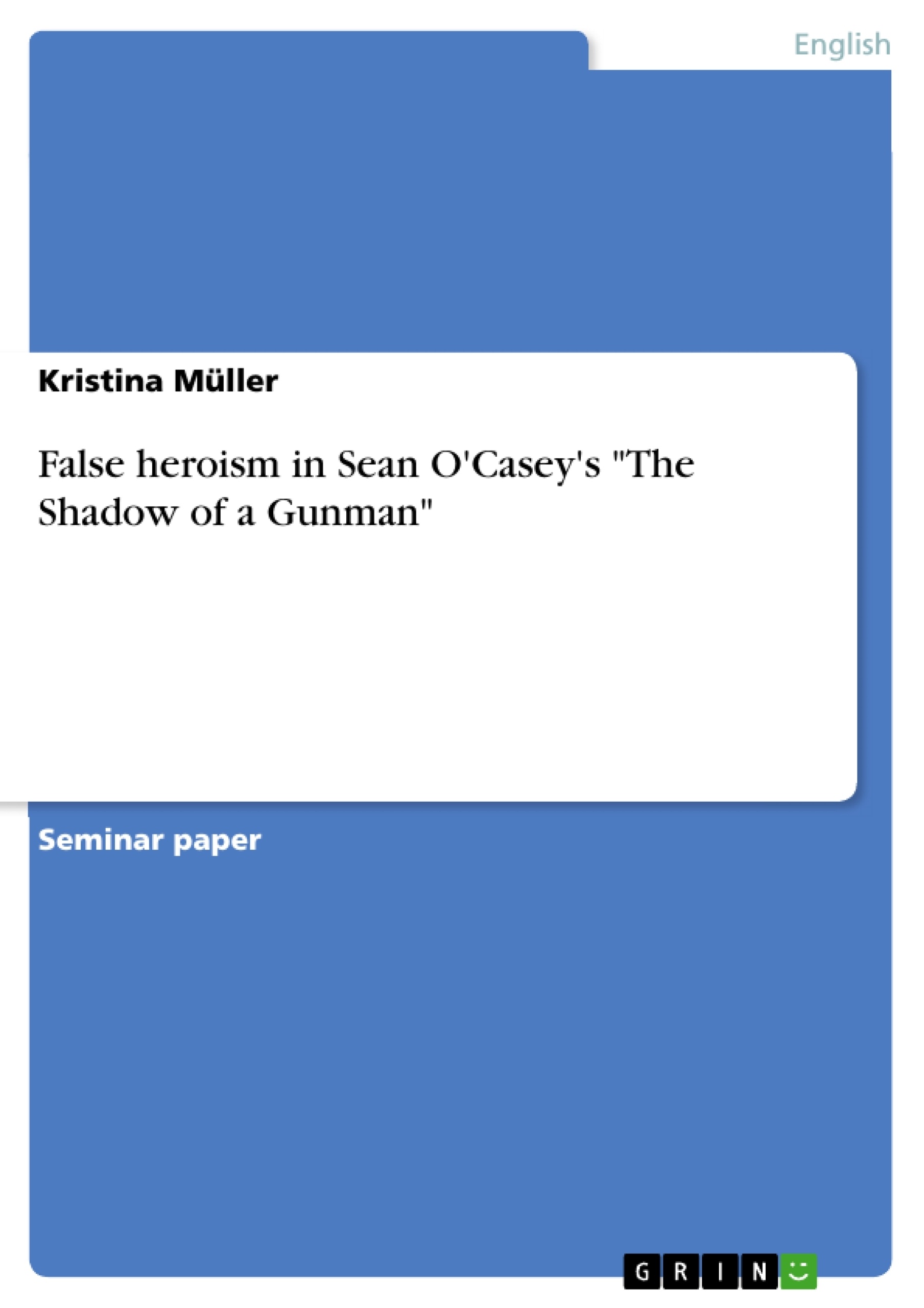“The Shadow or a Gunman“ was written in 1922 and first performed in 1923 when the Irish civil war that concluded the Anglo-Irish War was still raging between the Irregulars and Sinn Féin (“we ourselves”). The “Shadow” was performed in the Abbey Theatre, the only theatre that was still open, in the middle of April 1923. It was performed near the end of the theatre season to make sure that the Abbey would not lose much money if it flopped (Murray 44). But it did not, in fact it became one of the most popular Irish anti-war plays in the 1920s.
“The Shadow of a Gunman” was O’Casey’s first play to be accepted by the Abbey. His earlier attempts to find the balance in his art between politics and entertainment failed (like “The Harvest Festival”) (Murray 5), but with the “Shadow” he finally managed to write “a mixture of comedy and political commentary” (Murray 5) or “A tragedy in two acts” as he called it himself.
After the Easter Rising of 1916 when some “Volunteers” and members of the “Irish Citizen Army” tried to rise an armed rebellion against the British forces, a guerrilla war began in 1917 between the Irish Republican Army, a successor of the banned nationalist movements, and the “Black and Tans”, British special force troops sent to support the Royal Irish Constabulary that consisted mainly of veterans of Worl d War I. The “Black and Tans” got their name from their famous black and khaki uniform. Until July 11th1921 both parties fought each other in armed attacks. The British sent more and more soldiers (overall several tens of thousands were sent) until the Irish gave up when the activists ran out of weapons and people.
Inhaltsverzeichnis (Table of Contents)
- Heroism and the Irish in times of trouble
- The historical background
- Definition(s) of heroism
- The Shadow of a Gunman: about poltroons and shadow gunmen
- The male characters
- Donal Davoren
- Seumas Shields
- Mr Maguire
- Others
- The female characters
- Minnie Powell
- Others
- The male characters
- Conclusion
Zielsetzung und Themenschwerpunkte (Objectives and Key Themes)
This work explores the concept of heroism and its application to the portrayal of Irish characters in Sean O'Casey's play "The Shadow of a Gunman." It examines the historical context of the play, specifically the Irish Civil War, and investigates the evolving definition of heroism in literary works.
- The impact of the Irish Civil War on Irish society and identity
- The complexities of heroism and its representation in literature
- The portrayal of "anti-heroes" or "negative heroes" in modern literature
- The characterization of Irish characters in Sean O'Casey's plays
- The development of the Irish literary tradition in the early 20th century
Zusammenfassung der Kapitel (Chapter Summaries)
The first chapter delves into the historical backdrop of "The Shadow of a Gunman," examining the Irish Civil War and its impact on Irish society. It explores the definitions of heroism in various literary periods and how the concept has evolved over time. The second chapter focuses on the characters in O'Casey's play, analyzing the portrayal of both male and female characters and their relationship to the themes of heroism and cowardice. The analysis is divided into sub-sections dedicated to individual characters, providing insights into their motivations and actions.
Schlüsselwörter (Keywords)
The key terms and concepts explored in this work include: Irish Civil War, heroism, anti-hero, negative hero, Irish identity, Sean O'Casey, "The Shadow of a Gunman," characterization, Irish literary tradition, and early 20th century literature.
- Quote paper
- Kristina Müller (Author), 2004, False heroism in Sean O'Casey's "The Shadow of a Gunman", Munich, GRIN Verlag, https://www.grin.com/document/54360




